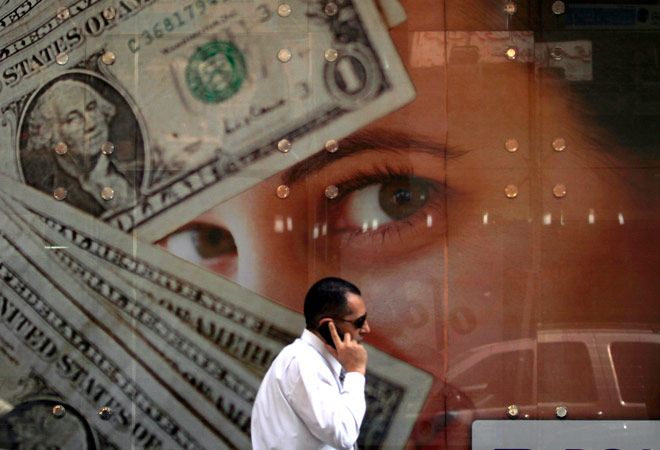 As the rupee is less bloated than its peers, it is likely to escape the brunt of the Fed's action, note Abheek Barua and Bidisha Ganguly
As the rupee is less bloated than its peers, it is likely to escape the brunt of the Fed's action, note Abheek Barua and Bidisha Ganguly
Even with global financial markets finely tuned into the US Federal Reserve’s forthcoming actions, the Federal Open Market Committee did not give any indication of when it might raise interest rates after its two-day meeting last week.
The FOMC simply said it would raise rates when there was further improvement in the labour market and inflation had moved back to its two per cent target level in the medium term.
The majority in the markets believe that a September lift-off is likely although there is a vocal minority that insists the US monetary authorities will delay further.
The minority case rests on the notion that the inflation target would not be met any time soon and would remain below two per cent (for the core private consumption expenditure or PCE deflator) in the foreseeable future, with global commodity prices going into a fresh downturn.
In July, the Standard & Poor’s Commodity Index fell below the 2008 bottom after the global financial crisis.
It currently lies close to its February 2002 level when the commodity super-cycle was yet to begin.
Assuming that the Fed increases rates in September, what could the implications be? An interest rate hike in the US amidst a sea of deflation and soft monetary policy is bound to give the US dollar further fillip and overall dollar gains seem safe to forecast.
That said, there is an argument that the gains would be more against emerging market currencies than heavyweights such as the euro and yen. The heavyweights have been beaten down badly and conventional valuation models suggest they are grossly undervalued.
The flip side of this holds for Asian EMs.
The case for sharp depreciation for a number of Asian currencies, such as the Thai baht and the Singapore dollar, is that their relative stability against the US dollar over the past year has bloated their valuations.
Thus they are ripe for a correction once a major trigger like the Fed’s interest rate button is pressed.
China could also decide to devalue its currency if it comes under pressure to reflate its economy.
The other problem with most emerging markets is both issuance and foreign ownership of sovereign debt issued in their local currencies have risen dramatically.
Foreign investment in emerging market local currency sovereign debt has nearly quadrupled over the last five years, with low global interest rates driving the search for yield.
An increasing portion of their debt is being held by fixed income mutual funds and exchange traded funds that are far more fickle than traditional investors such as banks.
Corporate debt in foreign currencies by EM companies has also risen sharply on the back of the sharp wedge between local and international rates.
The history of exchange rate stress shows that foreign ownership of a country’s debt plays a big role in triggering bouts of depreciation.
Thus EMs look extremely vulnerable to a reversal of capital flows.
India is not exactly immune to these pressures.
Foreign portfolio holdings of government debt in India have moved from $8.8 billion in August 2011 to $24.5 billion in March 2015.
The external debt to gross domestic product ratio has increased by a hefty three percentage points between 2011-12 and 2014-15 and about 54 per cent is short term, that is of less than a year’s residual maturity.
That said, there are some factors that could leave the rupee relatively better off were the Fed’s action to suck out liquidity from the market.
An important thing is to recognise the fact that while foreign ownership of India’s debt might have grown, the actual stock of this debt is much less than that of others.
Also, even if the rupee looks a little overvalued it is far less bloated than many of its peers.
As a result, the rupee is likely to escape the brunt of the Fed’s actions.
The image is used for representational purpose only. Photograph: Reuters
Abheek Barua is chief economist, HDFC Bank. Bidisha Ganguly is Principal Economist, CII












 © 2025
© 2025